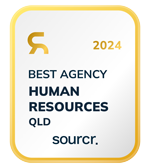Can we open all the doors on 1 July? Will the computers turn on 1 July? Will the phone lines work by 1 July? Will we have inducted, paid staff sitting in a seat that can commence our new, pending caseloads and start placing them into jobs 1 July?
Across all the awarded employment services providers for Workforce Australia the pressure is on and there will be countless meetings happening to ensure a resounding affirmative is the answer to the above questions. No doubt there will also be project meetings to ensure those meetings are happening in a timely manner and extraordinary board meetings to ensure milestones are being met!
To achieve ‘Go-Live’ in employment services takes a herculean effort within a limited window of time and it can sometimes be tempting to compromise on some of the project plan lines, not least having staff in place for day one. If you’ll indulge me a paragraph, I want to share an example from my own experience of setting up a contract at pace, because I think there are two valuable tips to draw from it.
The example involved implementing the UK’s Work Programme in 2011 for Ingeus. I was fortunate enough to be accountable for a region called East of England, a large area adjacent to London. The region was consistently at the top of the national provider performance tables and, as you’d expect, with that success came a good deal of prodding and questioning to understand what we were doing differently. Yes, we had some great local leaders and rode our share of luck, but I have always believed there were two foundational strategies that that gave us a head start:
1) We encouraged staff from London to transfer to East of England, pulling together modest but attractive relocation packages for those who put their hand up – because we knew that having a minimum of one experienced ambassador per new site at Employment Consultant level would help set the right performance culture from the outset.
2) We made our pre Go-Live induction feel like an event; in person; facilitated; executive-attended; catered – even the simple gesture of bringing staff together to hear the principles and intention of the new service model from senior leaders helped them feel valued and like they were fully connected to the company mission and purpose of the next five years.
What does that mean for Workforce Australia? Here are five thoughts to consider as possible line items for those Go-Live project plans under staffing:
⁃ Costing an interstate relocation incentive for wider consideration and approval to help populate sites in new areas – if approved, the next consideration may be to establish a minimum performance level that would make staff eligible.
⁃ If you are a new provider to an area, or can’t get staff to relocate, are you confident you have the package to attract the best of any displaced talent? It may be a mistake not to at least review existing terms and conditions against market averages to ensure you are competitive. Could a ‘senior’ structure be considered to replicate a model of having local champions of performance culture?
⁃ Linked to the bullet above, are your hiring managers armed with quality questions and coached for interviewing? It can be very easy to quickly judge and appoint applicants with industry experience by their resume, perhaps the ‘5 star provider’ they are coming from and, whilst that is helpful context, it’s not enough to gage whether they were a leader or a passenger of that level of performance. Also making sure your interviewers are taking a moment to share the key elements of service design they can at the end of an interview for the candidates that have shone – it’s a competitive time and the values of your business really shine through – your caseload ratio, whether there is a sales team supporting, these can all be points of difference.
⁃ Are your staff inductions booked in already in staff diaries with an appropriate venue? How much will budgets stretch to make it feel like ‘a moment’ in the history of the company and to set the tone for years to come.
⁃ To complement the above, most staff love a visual, and most financial models will now be able to give a decent forecast of the number of people that will need to find work over the life of the new contract. If that number is in the tens of thousands, why not Google stadium capacities, find a match and challenge staff to fill the seats!
Article by James Weait – Board Advisor Employment Services Parkhouse Bell


